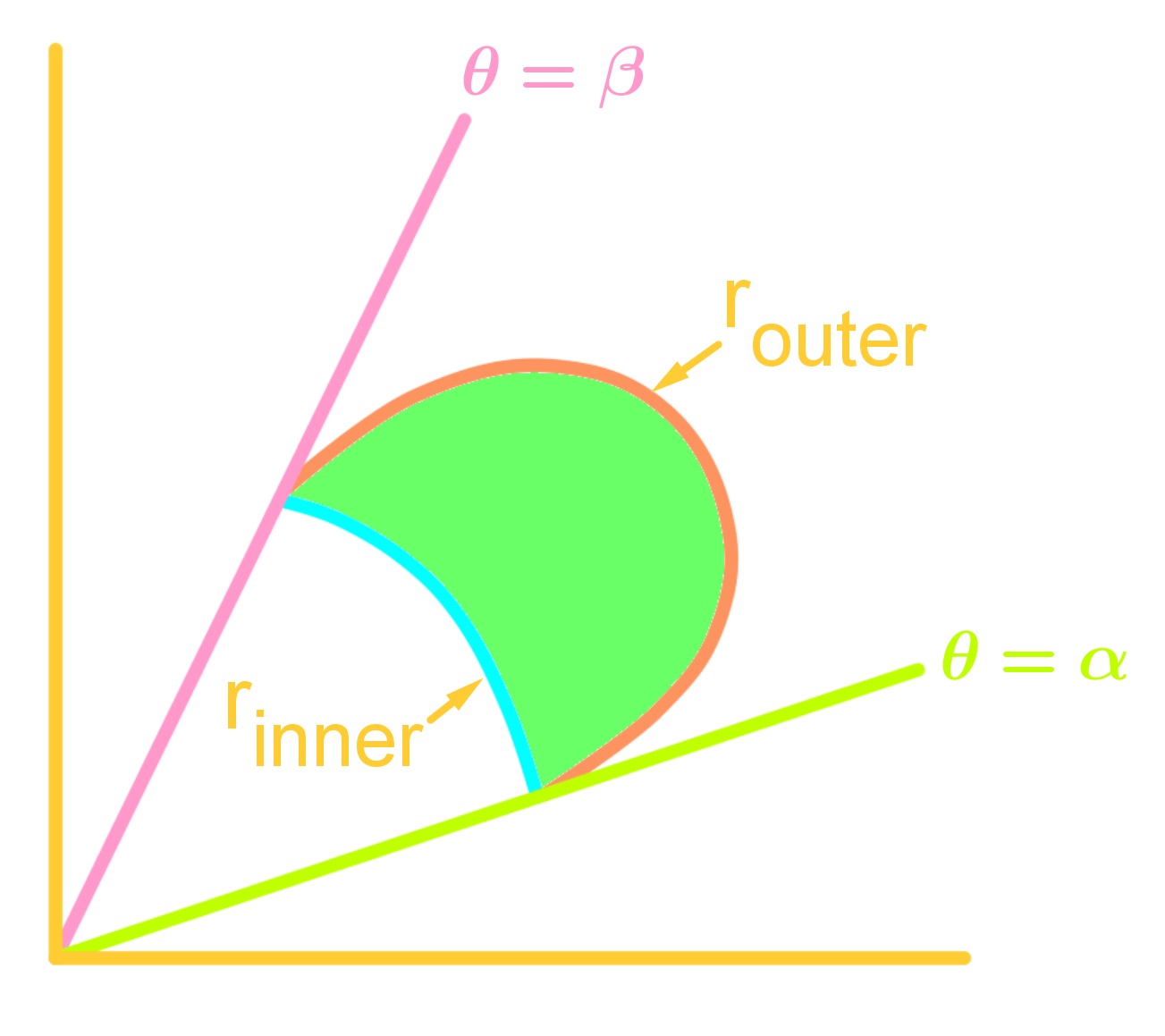where is the starting angle and is the ending angle.
To find the area that is enclosed by two polar equations like in the picture below, we use the formula:
where is the outer part of the first polar equation, and is the inner part of the second polar equation.







